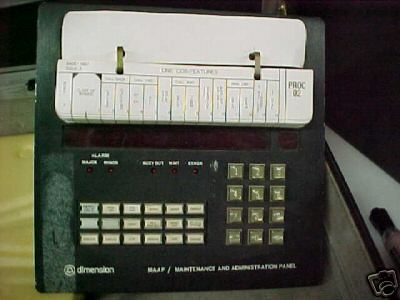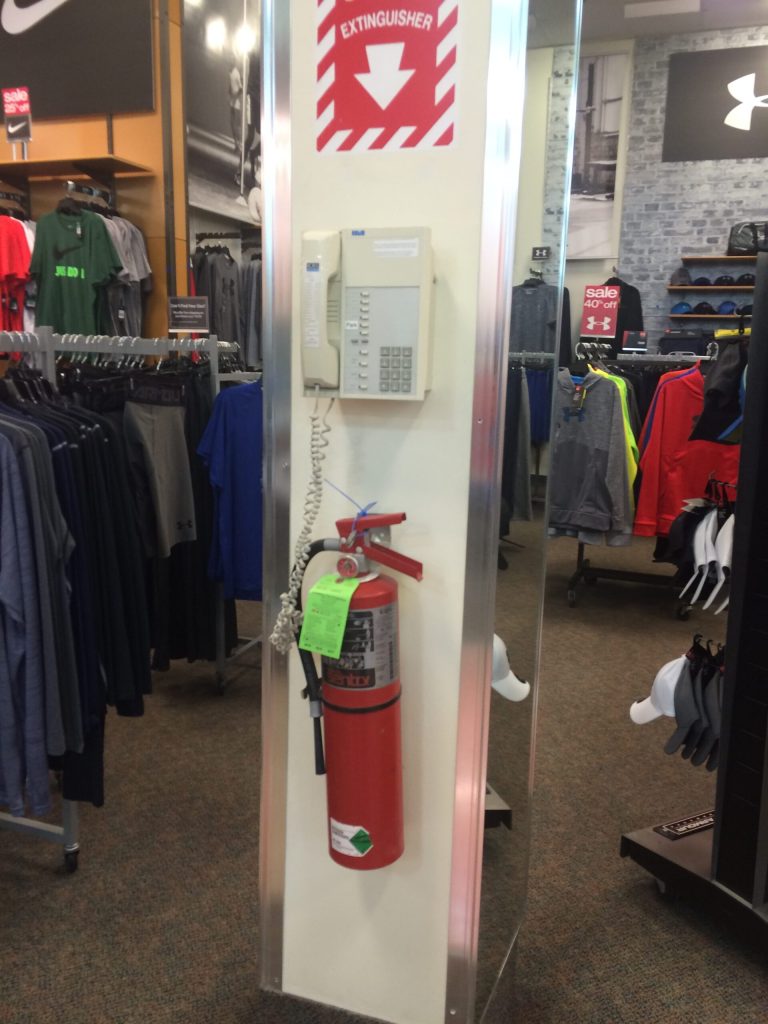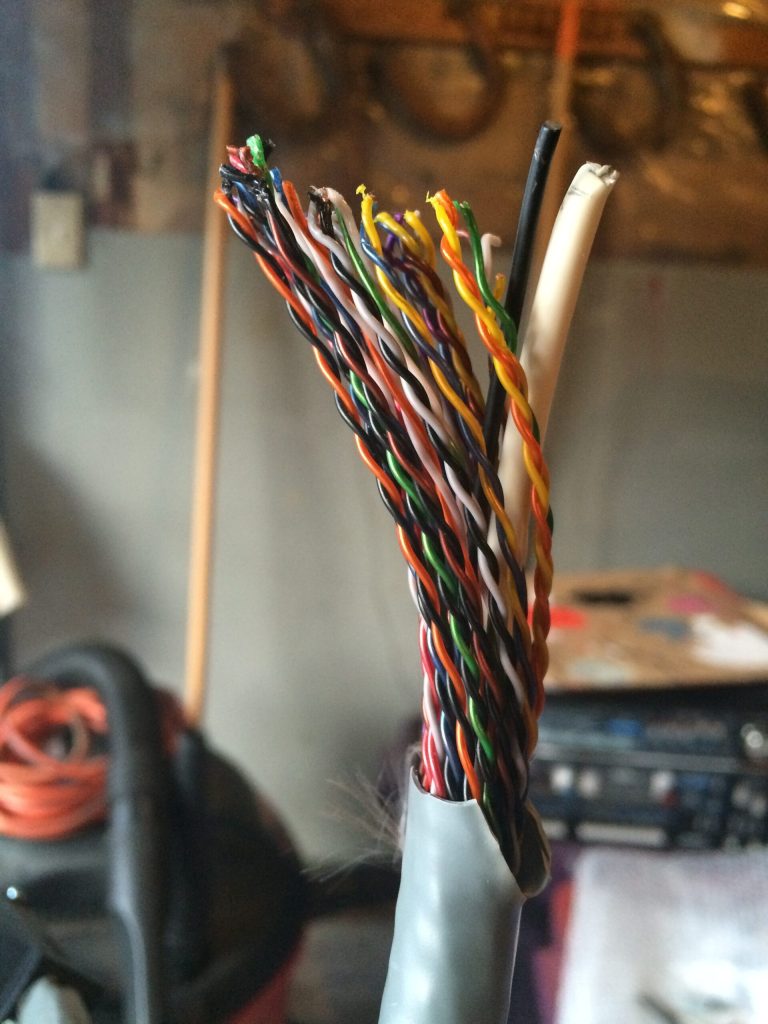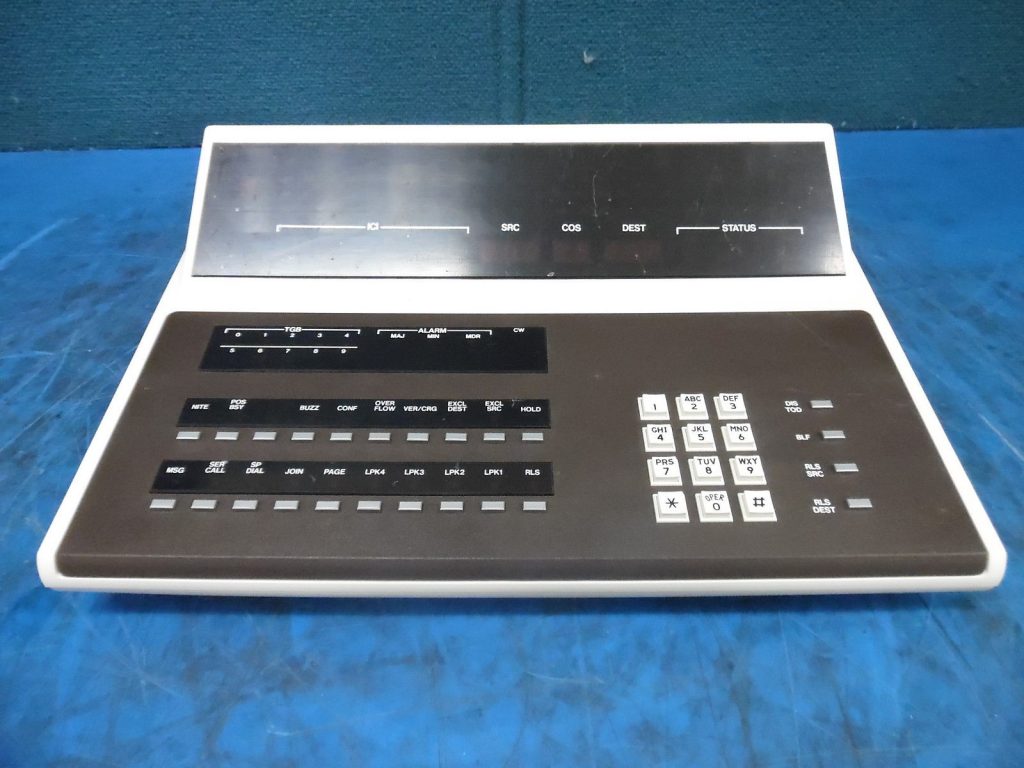Author: clickfo
Phone of the Day: ROLM phone at the Local Bob’s Stores
This was taken at a local Bob’s Stores when the day after the New England Patriots won their fifth Super Bowl. (Roger That! Heh, heh, heh.) For this chain, ROLM is alive and well, to use the cliche. Because ROLM predates the Internet and modern day documentation, I have no idea what type of PBX or KSU it lives on. The set themselves is the 1990s generation, before they became German looking (possibly mid 1990s.) When ROLM was fully sold to Siemens, a few years later, they stopped selling their systems to America and incorporated ROLM features and their modernest designs. I’m not the expert in ROLM so forgive me.
Phone-o-graphy – 25 Pair Amphenol Cable
Video: eBay Haul – Old AT&T Documentation, part two
This is part two, a part three to finish off my live commentary of the AT&T Sourcebook will follow later this week.
Enjoy!
🙂
Video: eBay Haul – Old AT&T Documentation
In this video, I show my latest eBay finds of old Dimension PBX and Bell System Practices on the Dataphone from 1983! Enjoy!
Telephony 101: On Voice Mail
Some people love voice mail, many just hate it. Many are apparently so egotistical, they think it’s not worth listening to 2 minutes of a voice based message than a generic email.
People also think email is better, but do you know the history of voicemail?
if the answer is no, lets go down memory lane of Voice Mail.
Voicemail is often assumed to be an electronic answering machine on a server. While it’s true, its origins was almost similar to sending a letter or an email, just with spoken word.
The first indication of such language was in printed publications in 1877. A famous man named Thomas Edison with an invention called the phonograph. For the Gen-X audience and older, this is basically a record player. Millenials are probably familiar to just be cool for the latest trend. While it was well known for songs, the ability to record spoken word, as a way to replace letter writing had the possibility. The “voice mail” language was in the lexicon by the 1910s.
While the answering machine was invented in the 1960s, the ability to install these would be so cost prohibitive, and worse, a wiring nightmare. In the early 1970s, Motorola introduced pagers that provided one way voice messages that would be answered by an “answering center” (this in 2017 is completely archaic with the advent of digital telephony, automated attendants, in fact the size of these answering centers were the size of contact centers, which was not existent at the time.) These pagers used UHF signals and were often used for volunteer fire fighters, etc. In this sense, this could be considered as a voice message.
Ugliest Operator Consoles, part nine
I’m the last guy to critique the look and feel of operator consoles. I’m not the guy who says “lookie… at this sleek and modern design of a set that doesn’t do anything significant” crap
This set (again found off an eBay listing) is an operator console for ROLM based PBX systems. Despite the last patch of their flagship 9100 systems probably of two decades; some sets are still in use.
Ugliest Operator Consoles, part eight
This Toshiba PBX Console was made for another system they sold before they focused solely on the Strata. From my research, in the midst of their business, they had the key system known as the Strata and a PBX system that could hold more than 300 stations. This console was incompatible with the smaller Strata
I have to say, the AT&T 301 and 302 would win on any console UI or looks any day!
Ugliest Operator Consoles, part seven
Kids, want to set up a PBX like it was the 1970s? Get your thumbs ready by playing some Atari and Pac Man, before heading to your assignment of adding a couple thousand stations and hundreds of trunks. Such finger exercises are similar to Pac Man!

While this “console” doesn’t take calls in a business, it does however require usage to make changes. This was Western Electric’s MAAP – The Maintenance And Administration Panel, better known by it’s acronym. Eighteen buttons plus your dialpad. While such practices are common in smaller systems at an assigned extension and port; this was the practice done on larger systems “back in the day”.
It wasn’t till the end of the 1980s, AT&T sold one of their own UNIX PCs to allow MAAP to be done similar to the terminal sessions found in the System 75. Data was entered similar to a System 75, but the app would take that data then spit it out through the serial connection the similar way it would’ve been done in the MAAP, a series of commands of pressing buttons here and there plus the numbers and/or letters on the keypad.
This was effectively out of date by the mid 1990s with the introduction of the Definity ECS (G3r V5) that merged the two systems. In it’s early days of the Definity G2, through the limited documentation AT&T released, it’s preferred administrative method was the UNIX box despite support for the MAAP.
MAAPs were not uncommon. Other vendors had used a special set to do system administration. In today’s smaller systems, non VOIP multi line phones at specific wired extensions can act as administrative terminals. PBXs however require dummy terminal, Web or app based administration.
POTD: Local Papa Gino’s
Sadly, where I live, Avaya or Nortel isn’t “alive and well” unlike another site I follow. Nortel has disappeared in my state in public and private entities in lieu of Cisco years ago and Avaya Red has slowly disappeared too.
On a Christmas Eve tradition before I was born, my family would order pizza out at the local Papa Ginos, that is local chain with more than one hundred stores around the Greater Boston region, basically in four of the six New England states. It’s reputation is fresh quality pizza of with quality ingredients. Over the years Papa’s has had exclusive marketing deals with the local Boston teams such as the Red Sox and currently the Patriots.
The chain has used AT&T products going back to the days of Western Electric. This location I had frequented growing up had used one of those 10 line 1A2 wall mount Key telephones till a cutover around 2001 to a Partner ACS system. The only ComKey I’ve ever seen in production was another store nearby, and that had cutover to a Partner circa 2001 or 02.
I’ve been to mostly the New Hampshire stores, and D’Angelo the sub shop, is a sister brand to Papa Ginos. I don’t recall them using any phone systems, the one nearby me, that I took a few years back with an Avaya van uses POTS phones.
But today, just the next block away from that same D’Angelo, I noticed this phone. Nope, its not a 9600 Avaya IP or 9500 DCP set. No, worse a Polycom VVX 310 set. (I haven’t been here for a while, some days I normally walk here because it’s not that far away from my home.)




